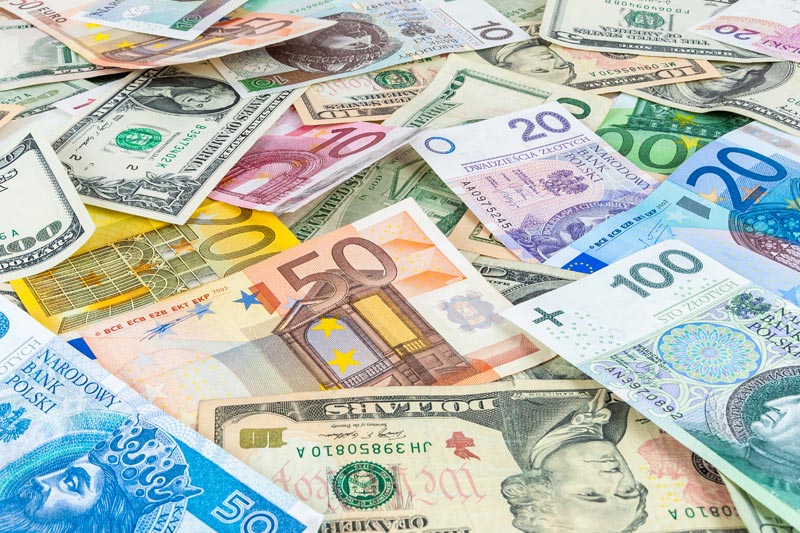Investing.com - The U.S. dollar droppped against its Australian counterpart during Tuesday’s Asian session.
The AUD/USD climbed 0.02% to 1.0543, off a session high of 1.0557 and a session low of 1.0536. Resistance can be found at Monday’s high of 1.0553, while support is at Monday’s low of 1.0541.
On Tuesday, Australia’s Reserve Bank -- the country’s central bank -- released its minutes from its previous policy meeting. At that meeting, Australia’s central bankers opted to cut interest rates by 25 basis points to 3%.
The minutes revealed that the policymakers believe that the Australian job market will remain weak for a year, but that they believe the Chinese economy has stabilized.
Roughly 20 percent of Australia’s economy is related to its mining sector. The mining sector largely exports its production to the nearby growing economy of China. As China’s economy has shown signs of cooling, many critics have stated that it was in for an economic collapse.
However, others have argued that China would have a gradual economic decline followed by a rebound. The minutes from the RBA's recent meeting appear to suggest that the bank's decision makers fall in the later camp.
Further, also released on Tuesday was Australia's CB leading indicator index. That index reported at 0.2%, greater than the prior report of -0.4%.
With Australia's economy showing signs of resiliency, continued strength in the Australian dollar appears likely.
Meanwhile, the U.S. dollar continued to show signs of weakness on Tuesday, with the dollar index dropping 0.05% to 79.58.
Even though U.S. policymakers appeared to get closer to solving the fiscal cliff on Monday, data out of the U.S. indicated that the world's largest economy might be slowing. The NY Empire Manufacturing Index reported at -8.1 early Monday, less than the -1.0 that was anticipated.
In addition, currency traders continue to digest the consequences of the Federal Reserve's recent policy moves. Last Wednesday, the Federal Reserve said it would keep interest rates near 0% until unemployment in the U.S. dropped below 6.5%.
With continued monetary easing in the U.S., and a strong economy in Australia, it is little surprise that the AUD/USD moved higher on Tuesday.
The AUD/USD climbed 0.02% to 1.0543, off a session high of 1.0557 and a session low of 1.0536. Resistance can be found at Monday’s high of 1.0553, while support is at Monday’s low of 1.0541.
On Tuesday, Australia’s Reserve Bank -- the country’s central bank -- released its minutes from its previous policy meeting. At that meeting, Australia’s central bankers opted to cut interest rates by 25 basis points to 3%.
The minutes revealed that the policymakers believe that the Australian job market will remain weak for a year, but that they believe the Chinese economy has stabilized.
Roughly 20 percent of Australia’s economy is related to its mining sector. The mining sector largely exports its production to the nearby growing economy of China. As China’s economy has shown signs of cooling, many critics have stated that it was in for an economic collapse.
However, others have argued that China would have a gradual economic decline followed by a rebound. The minutes from the RBA's recent meeting appear to suggest that the bank's decision makers fall in the later camp.
Further, also released on Tuesday was Australia's CB leading indicator index. That index reported at 0.2%, greater than the prior report of -0.4%.
With Australia's economy showing signs of resiliency, continued strength in the Australian dollar appears likely.
Meanwhile, the U.S. dollar continued to show signs of weakness on Tuesday, with the dollar index dropping 0.05% to 79.58.
Even though U.S. policymakers appeared to get closer to solving the fiscal cliff on Monday, data out of the U.S. indicated that the world's largest economy might be slowing. The NY Empire Manufacturing Index reported at -8.1 early Monday, less than the -1.0 that was anticipated.
In addition, currency traders continue to digest the consequences of the Federal Reserve's recent policy moves. Last Wednesday, the Federal Reserve said it would keep interest rates near 0% until unemployment in the U.S. dropped below 6.5%.
With continued monetary easing in the U.S., and a strong economy in Australia, it is little surprise that the AUD/USD moved higher on Tuesday.
